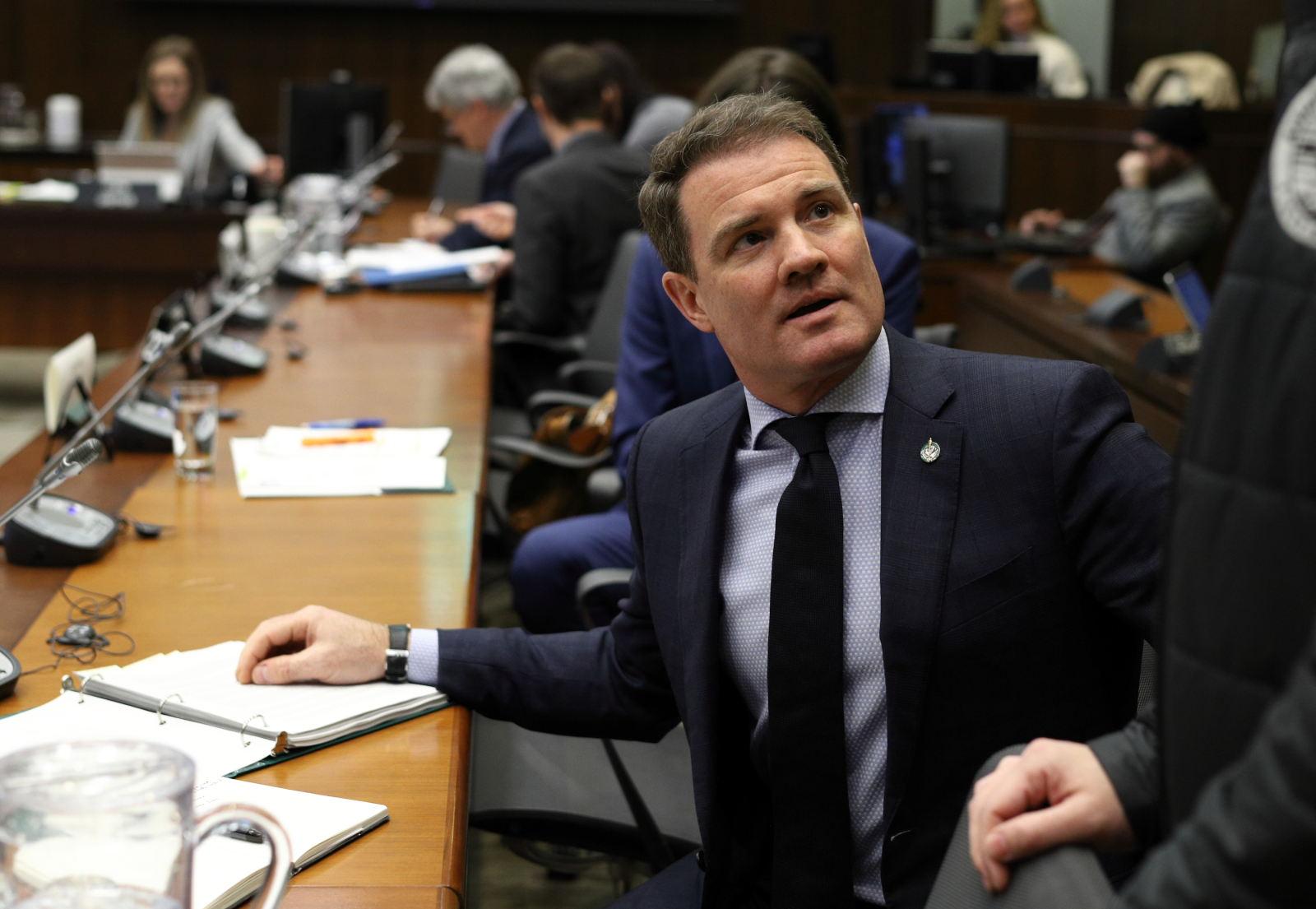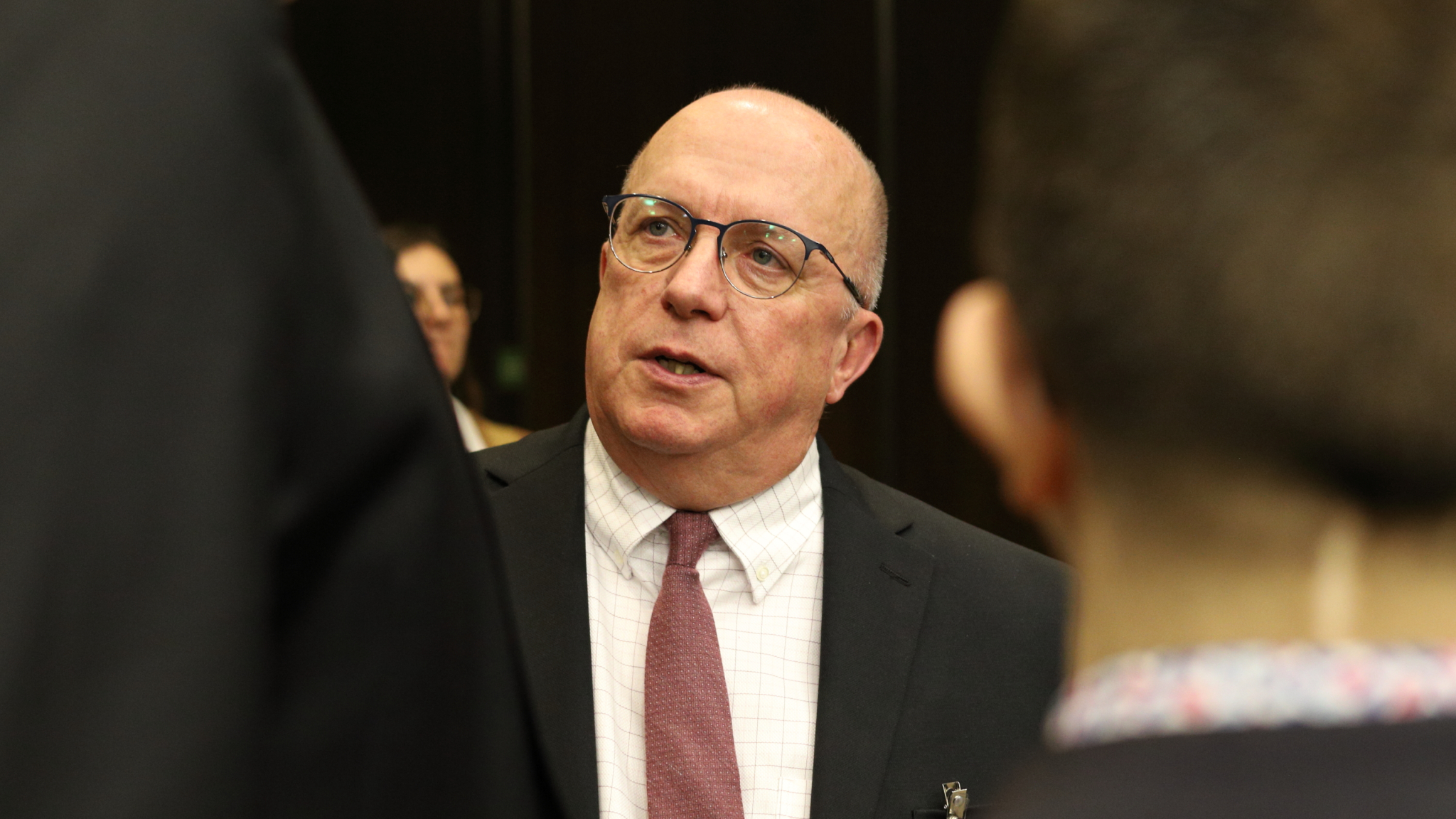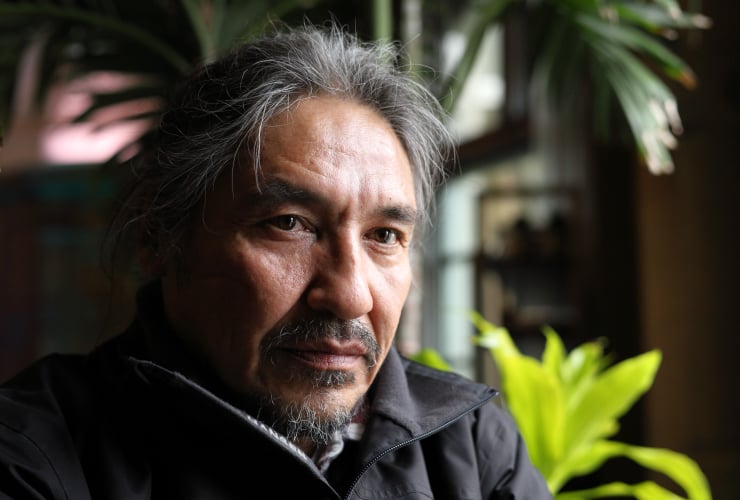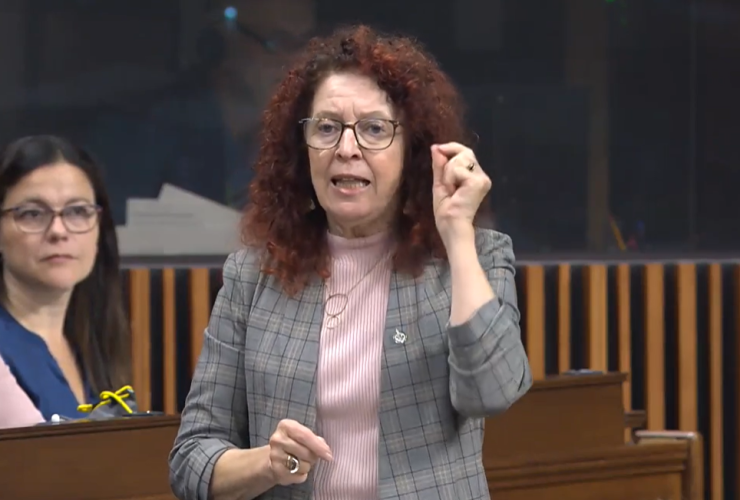Critical questions about tailing pond leaks at Imperial Oil’s Kearl facility are still unanswered after the second round of testimony by the Alberta Energy Regulator (AER) president, say some MPs.
Laurie Pushor and his lawyer appeared via Zoom before the Standing Committee on Environment and Sustainable Development on Nov. 28 after he was legally summoned to testify.
Many questions focused on evidence suggesting toxic oilsands tailings are seeping into groundwater and the findings of a third-party review the AER commissioned to examine its response, notification and communication protocols.
Pushor said he would not answer questions about the regulator’s ongoing investigations of the two incidents at Kearl to “protect the integrity” of the process.
There isn’t a timeline for the investigations, but Pushor said they will likely conclude in 12 to 16 months, though he noted the longest it can take is two years. The findings will be made public, he added.
Liberal, NDP and Bloc Québécois MPs repeatedly asked Pushor about evidence that suggests tailings are contaminating groundwater.
Earlier this year, it came to light that toxic tailings were seeping for nine months from Imperial Oil’s Kearl site in northern Alberta, and downstream communities were not properly notified. It took a massive spill of 5.3 million litres of contaminated wastewater in February for the long-term seepage, which Imperial Oil first reported to the AER in May 2022, to be made public through an environmental protection order. This sparked outrage from Indigenous communities, the public and politicians and set a series of public hearings into motion where members of the environment committee heard from affected communities, Imperial Oil and the AER.
The AER and Imperial Oil have said this is a communications issue. MPs say it is much more than that.
In a motion, Liberal MP Adam van Koeverden expressed disappointment with the AER, acknowledged the regulator “has been deficient in protecting the environment and health of communities adjacent to tailings ponds” and called for human health studies, increased monitoring and an audit of all tailings ponds. Conservative MP Gérard Deltell argued the motion was outside the committee’s jurisdiction and he ran out the clock so it did not go to a vote.
Liberal MP Lloyd Longfield asked how many other tailings ponds could be experiencing the same problems as at Kearl. He noted tailings ponds are designed to have some seepage out the bottom of the pond, but the Kearl seepage first reported in May 2022 saw the toxic substance leaking through the sides of the holding pond.
On April 24, Pushor said the AER would ask all oilsands operators to examine their tailings ponds and submit an assessment. On Tuesday, several Liberal MPs, including Longfield and Patrick Weiler, asked for an update.
“We've received all that information from the other mines across the region and it has and continues to be reviewed by our subject matter experts,” said Pushor.

Pushor’s second round of testimony “raises additional questions about what has actually taken place,” NDP MP Taylor Bachrach told Canada’s National Observer immediately after the AER boss finished his testimony. Namely, it begs the question of “how long this tailings pond has been leaching into the environment and how long the Alberta Energy Regulator knew that was happening,” said Bachrach.
“The AER is clearly a captured regulator and what Canadians deserve is independent oversight and enforcement of environmental laws,” Bachrach told Canada’s National Observer. “Unfortunately, it doesn't look like that's what's taking place here.”
Bachrach, Weiler, the BQ’s Jean-Denis Garon and other MPs also raised concerns about Suncor’s plans to install a wall nearly 14 kilometres long and between 20 and 70 metres deep through the McClelland Lake wetland in order to extract up to one billion barrels of oil. Some of Suncor’s own scientists on the sustainability committee have significant concerns about the company’s plan, CBC News reported on Nov. 1.
Last week, the AER announced a spill from a containment pond at Suncor’s Fort Hills oilsands project was actually 15 times larger than the company first reported on Oct. 9 and may have been occurring since June 2022. This “unplanned release” was melted snow and precipitation, according to the AER incident report. Suncor believes it was caused by a faulty valve.
Weiler drew a parallel between the incidents at Kearl and the estimated 10 million litres of water that escaped Suncor’s drainage pond.
“Were those events preventable? And if so, does the AER have a plan that will prevent these occurrences from happening again?” asked Weiler.
Pushor replied there is an open and active investigation.
“What has since been uncovered shows that there is a systemic — or appears to be — a systemic problem with the design of these tailing ponds,” said Liberal MP Leah Taylor Roy. “From my understanding, most of the tailings ponds are designed in the same way” with planned seepage, she said.
Roy added the focus should be on preventing incidents, not just responding to them. She asked what the AER is doing to ensure the same thing doesn’t happen again. Pushor did not answer, citing the ongoing investigations.
Van Koeverden said this round of testimony is reminiscent of Pushor’s appearance on April 24. The regulator president was “reluctant to provide any real evidence of accountability, demonstrate any changes to the way they do their work to ensure that this doesn't happen again,” he told Canada’s National Observer.
“[Tailings ponds] are designed to leak, and when they leak a little bit too much, that's when the alarm bells go off,” said van Koeverden. He went on to highlight the record profits oil companies have been posting recently.
“They have the resources to clean this up. It's just a matter of will,” he said.
Van Koeverden sees “a degree of conflict of interest” with the AER because, after the Kearl incidents came to light, the regulator is “clearly not enforcing the rules or regulations” or updating them to prevent future incidents, which is “a clear abdication of their responsibility as regulator,” he said.
Conservative MP Laila Goodridge, who represents Fort McMurray-Cold Lake, suggested the AER should communicate directly with local MPs or MLAs when there are incidents that affect their constituents. Pushor thanked Goodridge and said the AER will incorporate the request into its procedures.

Garon questioned the scope and reliability of the third-party review by Deloitte, a company that provides consulting services, among other things. Released in September, the review found the AER followed all its procedures and processes but highlighted some policies for emergency response, incident reporting and investigation are “dated” and not in line with Deloitte’s crisis and incident response framework.
The 14-page report was limited to the communication processes and did not question employees at the AER to identify where problems began, said Garon.
“The conclusion being that the AER complied with regulations. Well, it's easy to comply because there's not much to comply with,” said Garon in French.
Garon also asked why the AER did not get a retired judge or quasi-judicial commission to do a transparent inquiry instead of hiring a company like Deloitte, which he says can’t be independent because it will do business with the regulator in future.
Pushor stated his confidence in Deloitte’s work as an independent contractor, saying the company’s work is “not unlike” an auditor’s.
The AER is in the process of updating its website to make it easier for Canadians to navigate and find information, said Pushor.
Garon also asked about the possibility of major regulatory reforms, given the public perception many Canadians have that the AER serves industry. Regulations and standards are mainly set by the province, replied Pushor.
Time and time again, MPs asked about the presence of substances including toxic naphthenic acids, dissolved solids, sulphates in seepage identified in Imperial Oil’s groundwater monitoring reports as early as 2021. Several times, Pushor reiterated the regulator has found no evidence that the long-term seepage or larger spill affected drinking water or wildlife.
Environment and Climate Change Canada enforcement officers launched an investigation into Imperial Oil for a possible violation of the Fisheries Act in the spring. At that time, the department believed the seepage to be harmful to fish.
The Fisheries Act prohibits the deposit of a harmful substance — like the toxic chemicals that make up oilsands tailings — into water frequented by fish or any place where the substance could feasibly enter fish-bearing waters. A violation isn’t determined by whether fish are harmed by the deposit — just whether it entered or could have entered the waters where they live.
“Through these questions, we've seen a lot of what I would like to characterize as misrepresentation of what this industry is and isn't,” said Goodridge. The Fort McMurray area MP added it must be hard for committee members to understand what tailings ponds look like and the importance of the oil and gas industry while sitting in their “ivory tower in Ottawa.”
Several committee members have been to the oilsands. Chair Francis Scarpaleggia was there in 2007 and saw the oilsands from a helicopter. He pointed out that the committee is actively trying to get approval for funding to visit the region as part of its tailings study. The first request was rejected, but Scarpaleggia plans to put forward another request in the spring. Van Koeverden told Canada’s National Observer he also visited the region years ago.
A new report by the Pembina Institute, an Alberta-based think tank, found Canadian oil remains well above global averages for both carbon emissions and break-even price. It shows production costs per barrel of oil average US$20 globally, while the average in Canada is US$9 higher. For emissions intensity, Canada averages 85 kilograms of carbon dioxide (or equivalent greenhouse gases) per barrel of oil while the global average is 60 kilograms.
The committee is also calling Imperial Oil CEO Brad Corson back for a second round of testimony this winter.
Natasha Bulowski / Local Journalism Initiative / Canada’s National Observer
Pardon the pun, but please
Pardon the pun, but please keep drilling down on the AER (Alberta Energy Regulator) because CEO Laurie Pushor under committee questioning and his Conservative MP protectors just don't pass the smell test.
When an industry captures a
When an industry captures a provincial political party as well as the bureaucracy and regulatory agencies, it could care less, as there are no repercussions, no penalties, just a pat on the back and carry on. Alberta has the best example of that in the world, our AER.
Having been a participant in
Having been a participant in the formation of the AER since it's beginning generating their narrative it is time to call it what it is. Alberta Energy Repeal tool of the Oil and Gas, Pipeline, and Tar Pit industries. In its actual operation, they issue guidelines which do not match with the actual "how things get done" in the patch






Comments